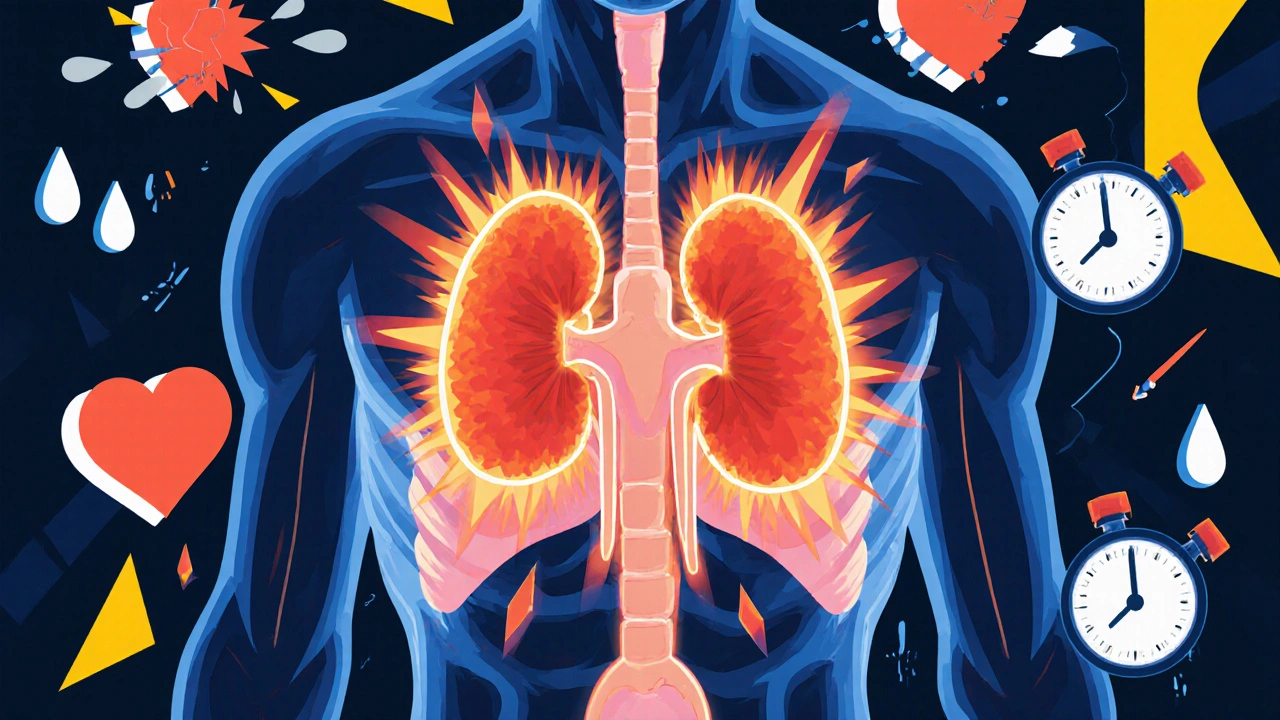Pheochromocytoma: Symptoms, Treatment, and Medications You Need to Know
When your body produces too much adrenaline and noradrenaline for no reason, it’s often because of a pheochromocytoma, a rare, usually noncancerous tumor in the adrenal glands that overproduces catecholamines. Also known as adrenal paraganglioma, it’s not common — but when it happens, the effects can be life-threatening. This tumor triggers sudden, intense surges of stress hormones, leading to pounding headaches, sweating so severe it soaks your clothes, and blood pressure spikes that can send you to the ER. Many people mistake these episodes for panic attacks or severe anxiety — but if they keep coming back, it’s not just stress.
Pheochromocytoma doesn’t just raise blood pressure — it makes it unpredictable. One minute you’re fine, the next your systolic pressure jumps over 200. That’s why doctors look for patterns: episodes triggered by stress, certain foods like aged cheese or chocolate, or even physical activity. The tumor itself is small, often under 2 inches, but its impact is huge. It’s usually found in one adrenal gland, but sometimes both. About 1 in 10 cases are inherited, linked to genetic syndromes like MEN2 or von Hippel-Lindau disease. If you’ve had multiple unexplained episodes of high blood pressure before age 40, or if your blood pressure won’t respond to standard meds, this is something your doctor should test for.
Once diagnosed, treatment starts with alpha-blockers, medications like phenoxybenzamine or doxazosin that calm the blood vessels and prevent dangerous spikes. You can’t jump straight to surgery — you need to stabilize first. After that, beta-blockers, like propranolol, are added to control heart rate — but only after alpha-blockers are in place, or you risk a deadly rebound in blood pressure. Surgery to remove the tumor is often curative, but recovery requires close monitoring. Even after removal, some people need long-term blood pressure management.
What you’ll find below are real, practical guides on how medications like alpha-blockers and beta-blockers are used in practice, how patients manage side effects, and what happens when treatment doesn’t go as planned. You’ll also see how high blood pressure tied to rare conditions like this compares to standard hypertension, and why some drugs work better than others depending on your situation. This isn’t theory — it’s what people actually deal with when they’re diagnosed with pheochromocytoma, and how they get through it.

